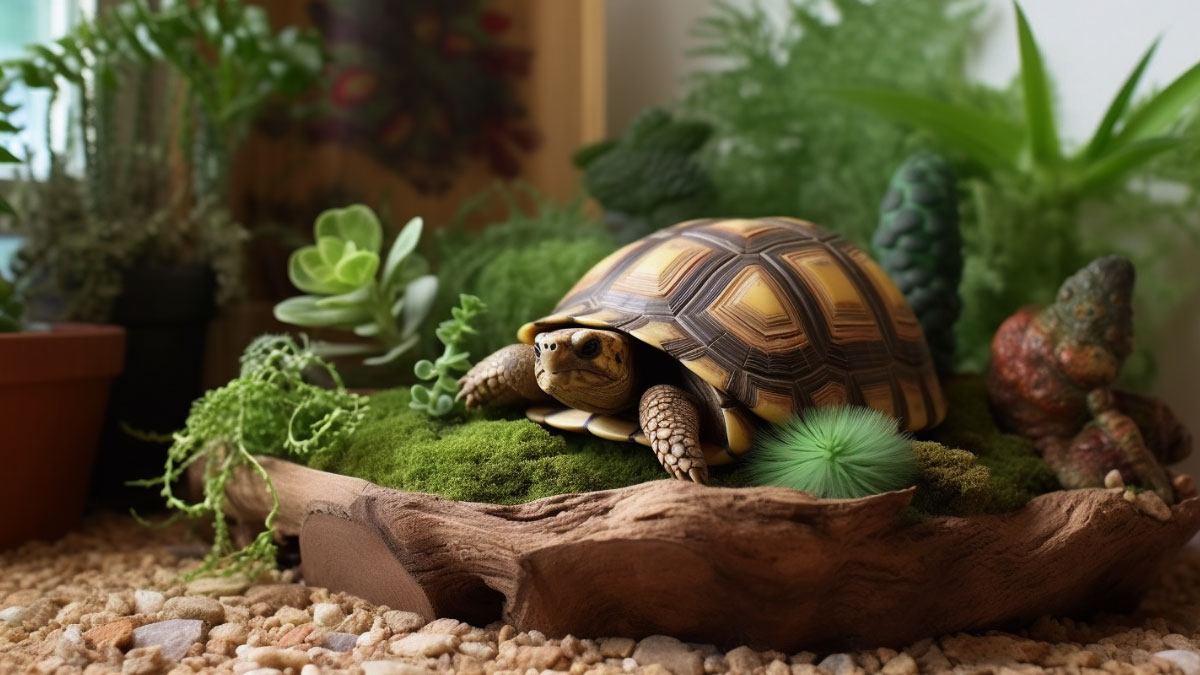How To Take Care Of A Tortoise? A Complete Guide
Tortoises’ lifespan generally ranges between 60 to 70 years. This lifespan significantly varies between the tortoise living in the wild and in-home care. If you are bringing the tortoise home as a pet, special care is required.
So, how to take care of a tortoise? Taking care of a tortoise requires
- Maintenance of the environment, humidity and temperature
- Supply of water
- Proper diet
- Hygiene and medication
Any deviation in the ideal condition would lead to fatigue and disease in the tortoise. But appropriate conditions can help the tortoise to grow healthily.
Therefore, to maintain the ideal environment, you can follow the guide below. Where all the necessary parameters required for the growth of the tortoise are added. Let’s get into it.
In-Depth Guide: How To Take Care Of A Tortoise
Contents
There are many aspects to cover when it comes to taking care of your pet tortoise. So let’s dive into them one by one.
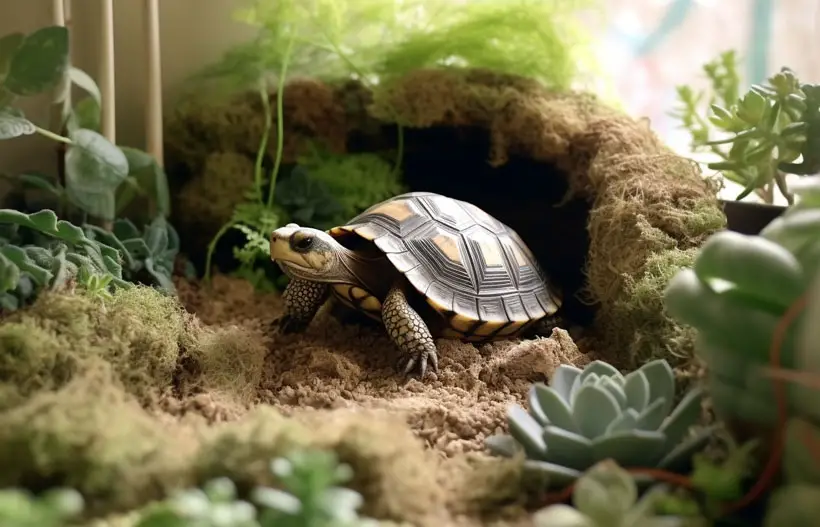
The Housing Of Tortoise
If you have brought a tortoise at home, you must have already chosen a place for it. No matter where they are going to be kept, their housing or enclosure should have sufficient facilities.
- The enclosure should have at least 5 feet x 5 feet size in length x width.
- Apart from that, the enclosure should be built of wood or cement.
- Some prefer putting the tortoise in the aquarium or in the glass enclosure. But the see-through glasses would make the tortoise go far beyond the view. As a result, the tortoise might climb up to the wall.
- Also, aquarium generally comes with a longer size and that might cause suffocation in pet.
Indoor Housing
- If the tortoise is kept at home, firstly, put the enclosure near the exposure to natural sunlight. But not in direct contact as it can lead to rapid dehydration.
- Also, do not keep the enclosure close to the electrical circuits or power supply lines.
- However, keeping the enclosure away from other pets would reduce the chance of the tortoise being attacked.
- Additionally, the temperature and humidity of the enclosure should be controlled as far as possible.
- Use accessories inside the enclosure to facilitate living, such as placing some plants, grass, and toys.
- Remember not to spray any toxic substances, fertilizer, or sprays near the tortoise. Breathing problems might occur in the tortoise by inhaling such toxicants.
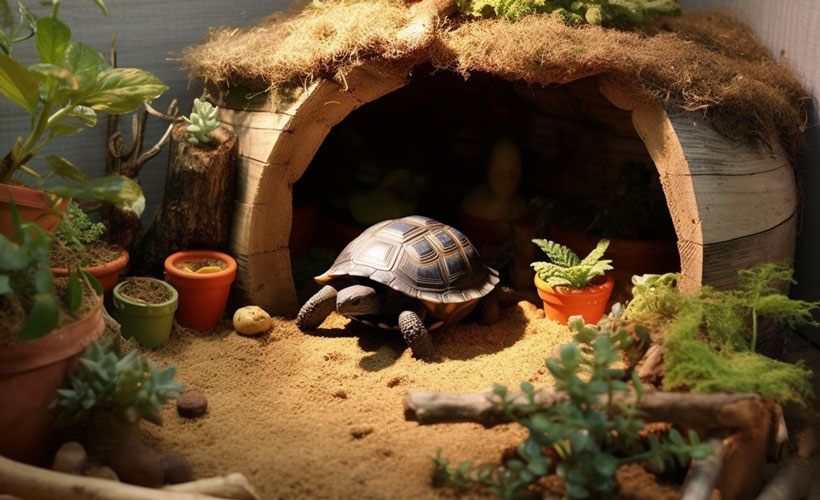
Outdoor Housing
- In the case of outdoor housing, building a large enclosure is necessary as the tortoise will get bigger with time.
- There should always be shade inside the enclosure to maintain the right temperature and humidity in the outside environment.
- Always put a hide box in the enclosure separately as tortoise needs their own alone time. They are shy and always tend to hide under the shell or in hiding boxes.
- In addition, plant some small plants for the tortoise inside the enclosure. These would act as a food source for them. Be cautious that the plants should not contain any fertilizer.
Here’s a video of a DIY Tortoise housing that might come in handy;
Necessary Environment For The Tortoise
Tortoise requires a particular condition to live healthily. Thus, the following parameters should be maintained in order to give them a healthy quality of life.
Substrate
Substrates are used to cover the floor of the enclosure.
- For the tortoise, the substrate should be slightly wet so that it can keep them hydrated all day long. But too damp substrates can lead to fungal and bacterial infection in the pet.
- So the overall humidity of the enclosure should always fall between 50% to 80%.
- One can use hay, sphagnum moss, grass, coconut coir, and peat moss as a substrate in the enclosure.
- Also, putting soil can give them the taste of their own habitat.
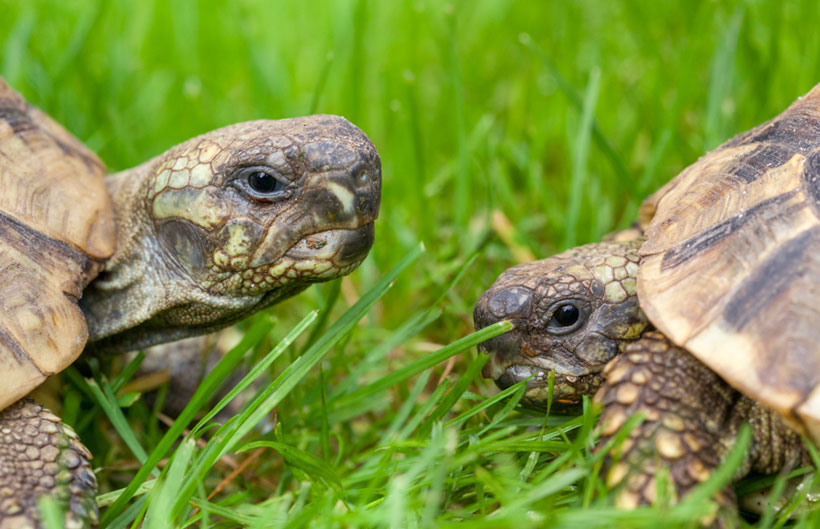
Light
A sufficient supply of light is required for the healthy growth of the tortoise. Because vitamin D requires light for synthesis. Without light, the vitamin would not be able to get absorbed in the body properly.
- In the case of outdoor housing, the exposure to sunlight would do the rest. But in the case of indoor housing, you would need to put a basking bulb. It can provide sufficient UV light for the tortoise. That helps in synthesizing vitamins.
- Put the light at a corner of the enclosure and mark that as the lighting area.
- The light should be placed high enough so that it does not touch the tortoise. You can also try putting them in a lamp holder.
Heat
- Tortoises require a warm place to live. That’s why the temperature of the enclosure should be kept between 21 to 32 degree Celsius.
- Well, in day time, the temperature between 21 to 26 degree Celsiius is enough. But for the nighttime, it should be between 21 to 32 degrees Celsius.
- Using two thermostats for monitoring the temperature is helpful.
- During winter, in the case of outdoor housing, you should either take them home or let them use the shelter. Mainly, take them away from the outdoor enclosure.
Cleaning
- It is necessary to keep the enclosure clean. Otherwise, bacterial and fungal infections might occur in the pet tortoise.
- To clean the enclosure, remove the residual food and water.
- Always keep the substrate clean. If hay is used as a substrate, you can also change it frequently.
- Moreover, clean the enclosure at least once a week.
Water
- Keep a water bowl in the enclosure where you should supply water daily.
- The water should be changed and cleaned. This helps them to get cleaned and also to stay hydrated.
- The tortoise would use the water for bathing and sometimes to drink. They might also excrete while being in the water bowl or bathing. It makes cleaning easier.
- You can also use a water drainage system which would remove the water easily from the enclosure.
How To Take Care Of A Tortoise During Hibernation?
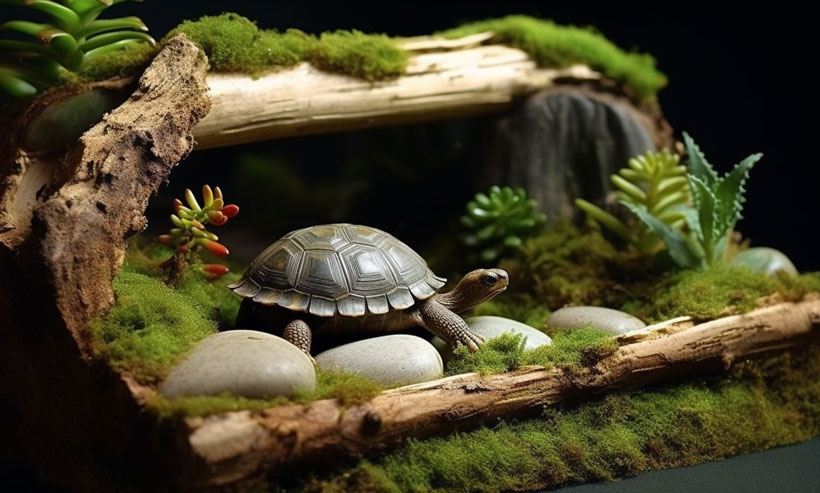
Hibernation is the natural process in animals when they require special care.
- During hibernation, the tortoise would become slow and will be seemed pale.
- The tortoise would generally fast before the hibernation period, so no need to worry. Just ensure proper food and their weight should not fall.
- However, the hibernation period generally continues for about 11 to 12 weeks. If it continues for long, vet consultation is a must.
- Keep a hibernating box inside the enclosure where the temperature should be kept at 5 degrees Celsius.
What To Feed My Tortoise?
- Tortoises generally live on grass and weeds. They also prefer vegetables and fruits. But the high sugar-containing fruits should be avoided.
- Moreover, all of the food should be grown without using fertilizer and pesticides.
- Some species of tortoise also prefer to have insects and worms. It is safe to feed them grass and vegetables instead of insects and worms if they like them.
- For baby tortoises, the vegetables and grasses should be cut into small pieces. Otherwise, they would not be able to chew such foods.
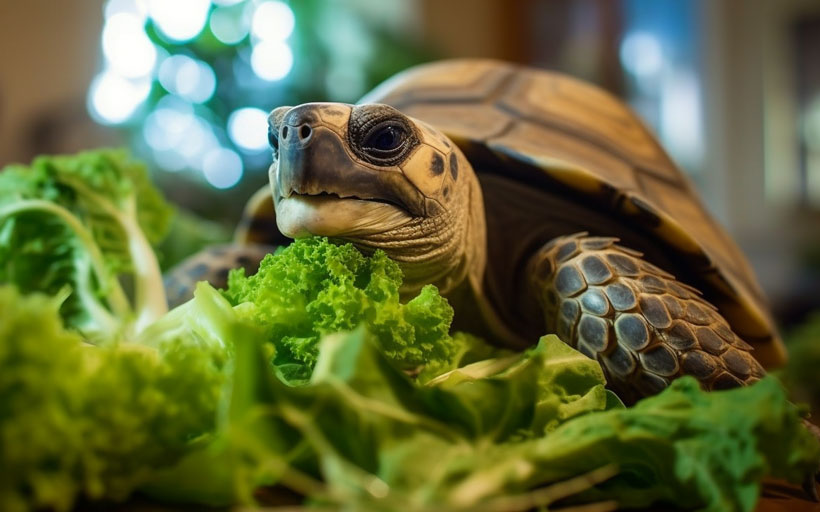
Here’s a table of what you should feed your pet;
| Grasses | Vegetables | Fruits | Herbs/Plants |
| Bermuda grass | Brussels sprouts | Cantaloupe | Aloe vera |
| Alfalfa grass | Broccoli | Blueberries | Field bindweed |
| Sowthistle grass | Dandelion | Strawberries | Flowers |
| Hay | Barley | Apple | Hibiscus |
| Carrot | Watermelon | Red clover | |
| Bell pepper | Pear | Plantain plants | |
| Mustard leaves | Grape | ||
| Red cabbage | Peach | ||
| Collard greens | |||
| Kale |
What Not To Feed The Tortoise?
Not all fruits and vegetables are good for tortoises. Certain food can cause health problems and toxicity in the tortoise.
- Overall, citrus foods are considered toxic to the tortoise. But it is also assumed that a very small portion would not harm.
To keep the tortoise free from toxicity, follow the below list where all the foods that should not be consumed by the tortoise are listed.
- Peas
- Rosary bean
- Grape ivy
- Daffodil
- Citrus food
- Legumes
- Grains
- Mushrooms
- Sugar
- Meat
- Dog and cat food
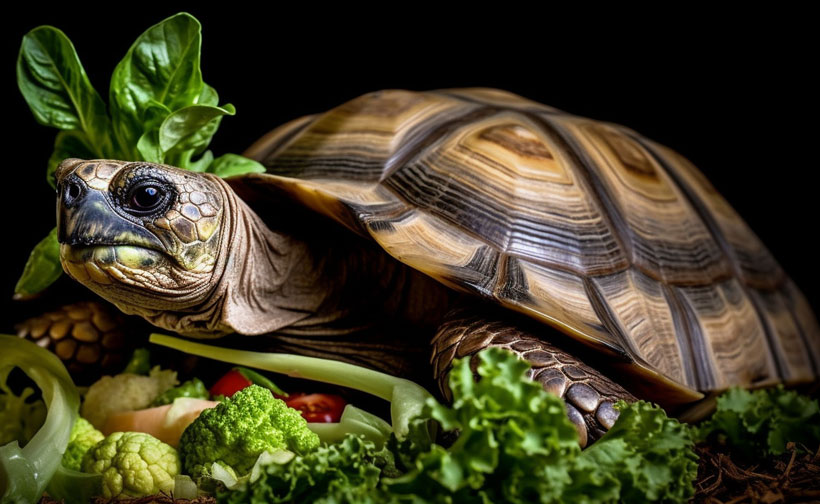
How To Know If The Tortoise Is Sick?
Tortoise tends to get sick when the environmental condition is not in favor. To know their bodily conditions, you would need to observe them. Below, some of the common factors are listed so that you can check if the tortoise is well or not.
Injuries
Injuries in the tortoise can occur when they can be struck by sharp things. Especially when you are handling them indifferently.
If they fall from the hand very hard, it can cause injury. These injuries can lead to further infection in their body.
To treat the injuries, vet consultation is required.
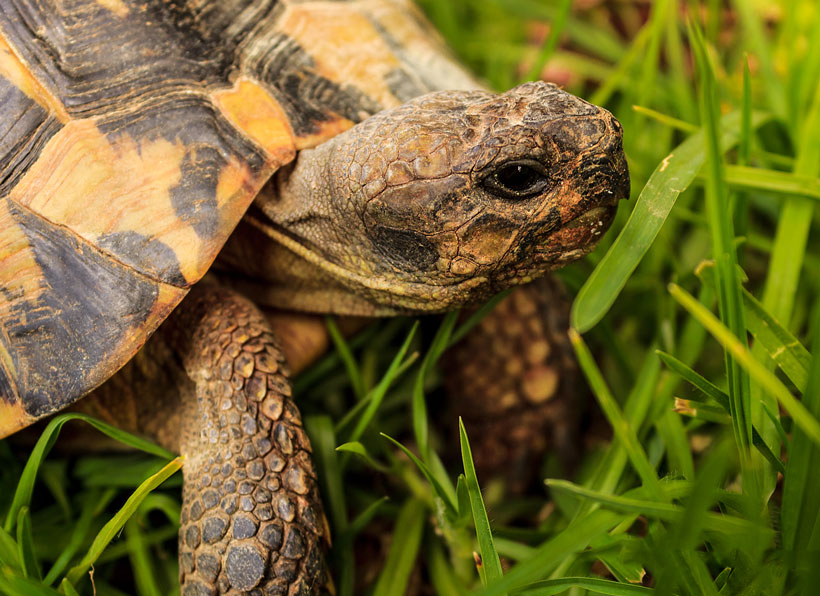
Diarrhea
When the diet of the tortoise contains too much fiber, it can lead to diarrhea in the pet. This improper diet would later initiate malnutrition. That’s why ensuring a proper diet is necessary for preventing malnutrition in tortoises.
The symptoms of diarrhea include; loose or watery stools, increased frequency of defecation, and lack of appetite.
Shell Pyramiding
Shell pyramiding is a condition that affects the shell of tortoises. It is characterized by the formation of pyramid-shaped bumps or growths on the scutes of the shell.
And it is mostly caused when the tortoise is overfed or the diet is full of protein, fiber, and fat.
Apart from that, increasing calcium and phosphate supply would also influence the condition. Nevertheless, proper temperature, humidity, and diet can prevent the condition of the tortoise.
Dehydration
Tortoise requires a water supply to keep them hydrated. As they need warm conditions to live, they often get dehydrated faster. One of the symptoms is sunken eyes.
To prevent this, a continuous water supply is needed in the enclosure.
Besides, dehydration can also lead to kidney disease and can disrupt the metabolic process.
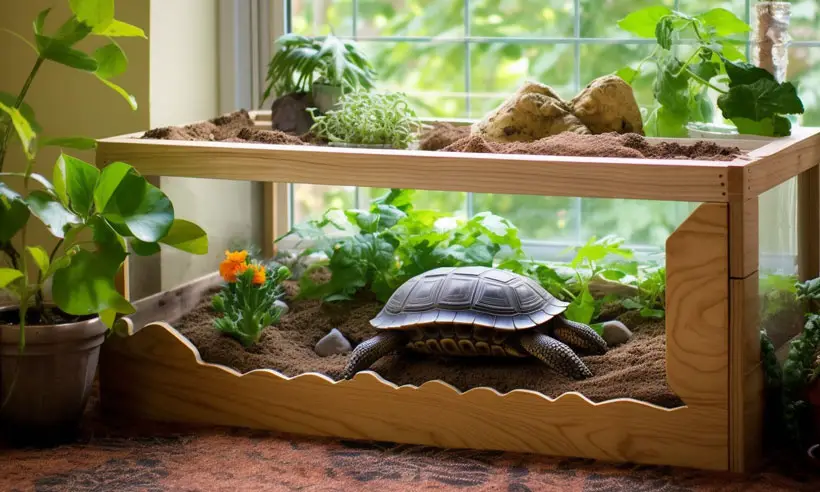
Respiratory infection
Respiratory diseases are the most commonly observed in the tortoise. Infections can occur when they are left for a long time in the water. This causes breathing problems.
Apart from that, any type of chunks of hay or grass stuck in their nose would also lead to bacterial infection.
The signs of respiratory disease are lethargy, loss of appetite, and nasal discharge. In severe cases, the mucous membrane will transform into pale and blue color. Consulting the vet is necessary when such signs are observed in the tortoise.
Fungal and bacterial infection
Viruses, fungi, and even bacteria can lead to infection in the tortoise. Low temperature is highly considered a factor influencing infection. Too damp conditions and unhygienic enclosure would also initiate the disease. Consequently, the tortoise has a higher mortality rate due to these infections.
The symptoms of these infections are; wheezing, coughing, runny nose, difficulty breathing, and shell rot.
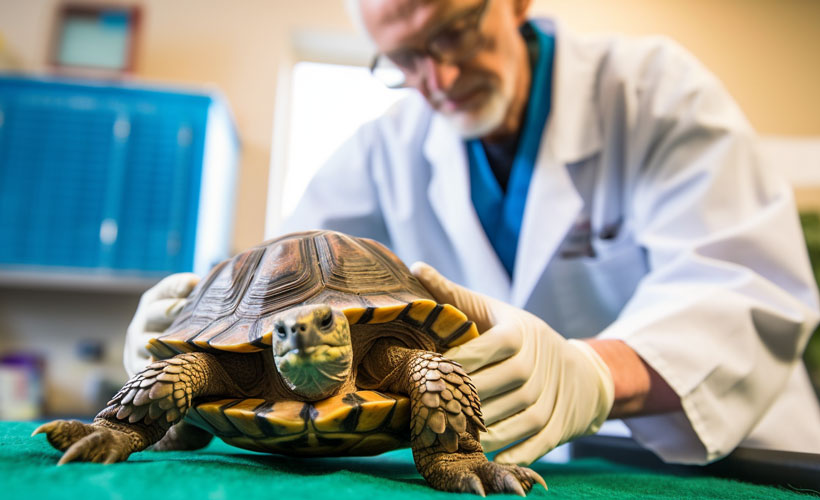
FAQs
Let’s go through some of the frequently asked questions by you guys.
Yes, it is okay to put the tortoise in the water. It keeps them clean and also hydrated. However, remember to change the water every day.
Generally, keeping the tortoise in water for 15-20 minutes is ideal. You can put them in water for once or twice a week. It is still recommended to bathe them daily to keep them clean.
Yes, a tortoise can survive up to 6 months without food. So, it can be left alone for 3 days without food. Adult tortoises will cop up somehow. But the younger ones would at least need water to survive.
Final Words
Overall, tortoise tends to live for a long time. In the wild, they have to search for their own food and arrange their own shelters. But when they are adopted as a pet, they must get their privilege. Thus, you need to take proper care of their growth.
Now, how to take care of a tortoise has a very broad explanation. In short, it consists of maintaining diet, hygiene, enclosure, light, humidity, temperature, and more. Even the slightest change would create appreciable change in the tortoise.

